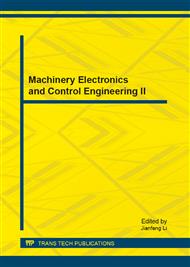p.3
p.7
p.11
p.15
p.20
p.27
p.31
p.37
A Modified Direct Torque Control Based Fuzzy Variable Structure of Permanent Magnet Synchronous Motor
Abstract:
For getting the High-performance electric vehicle control which has good dynamic, static characteristics and robustness, a direct torque control strategy of fuzzy sliding mode variable structure was designed to IPM motor. The method changes torque ripple, speed overshoot, poor anti-disturbance ability of the conventional DTC, and weakened the serious chatting which existed in sliding mode variable structure control. The simulation results show the feasibility and effectiveness.
Info:
Periodical:
Pages:
15-19
Citation:
Online since:
March 2013
Authors:
Price:
Сopyright:
© 2013 Trans Tech Publications Ltd. All Rights Reserved
Share:
Citation:


